





TASK _ IMPROVE AND INTERLINKBARK BEETLE MONITORING
BARK BEETLE MONITORING
︎︎︎
WHY ?
UNDERSTANDING THE BLIND SPOTS
OF
GERMANY’S “CLEAN FOREST MANAGEMENT”
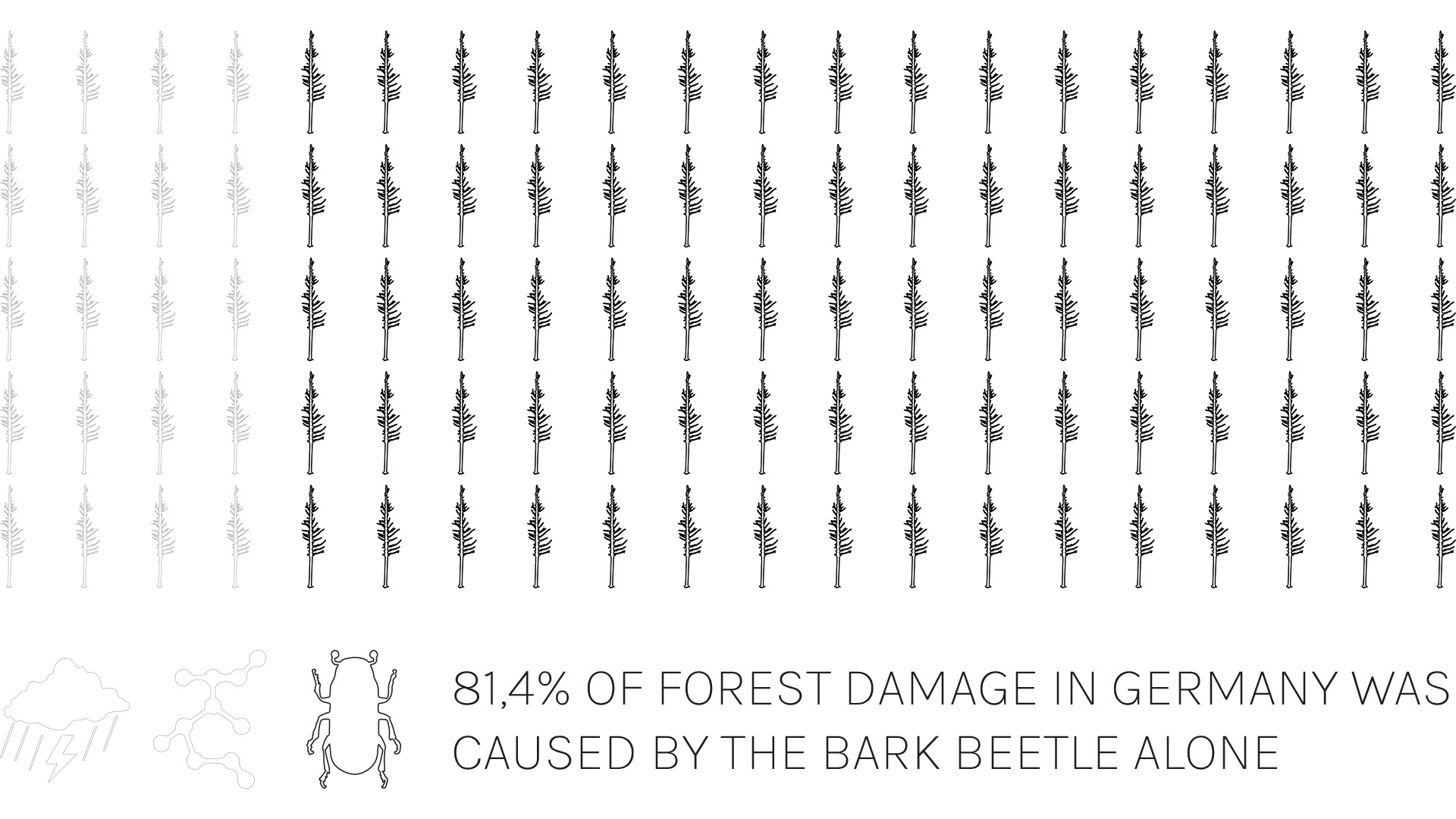
Around the world, forests are threatened by overforesting and the consequences of climate change, although they are indispensable for the health of nature and humans. Storms, pollutants, and pests are a burden on the tree population, with over 80% of all German forest damage being caused by the bark beetle alone. The bark beetle multiplies in the bark of conifer trees, which then die due to exhaustion.
To combat this pest in the long term, a transformation from forestry monocultures to more natural and thus more resistant forests must take place. On the other hand and in the short and medium term, the damage to the stock must be kept as low as possible.
To combat this pest in the long term, a transformation from forestry monocultures to more natural and thus more resistant forests must take place. On the other hand and in the short and medium term, the damage to the stock must be kept as low as possible.



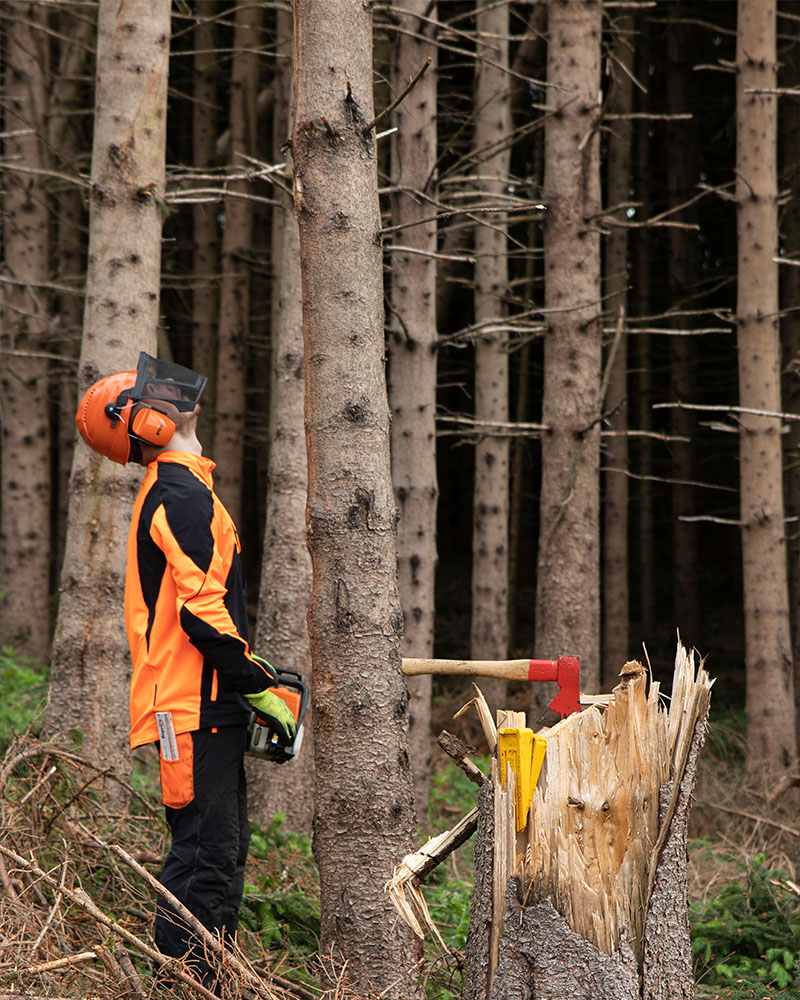



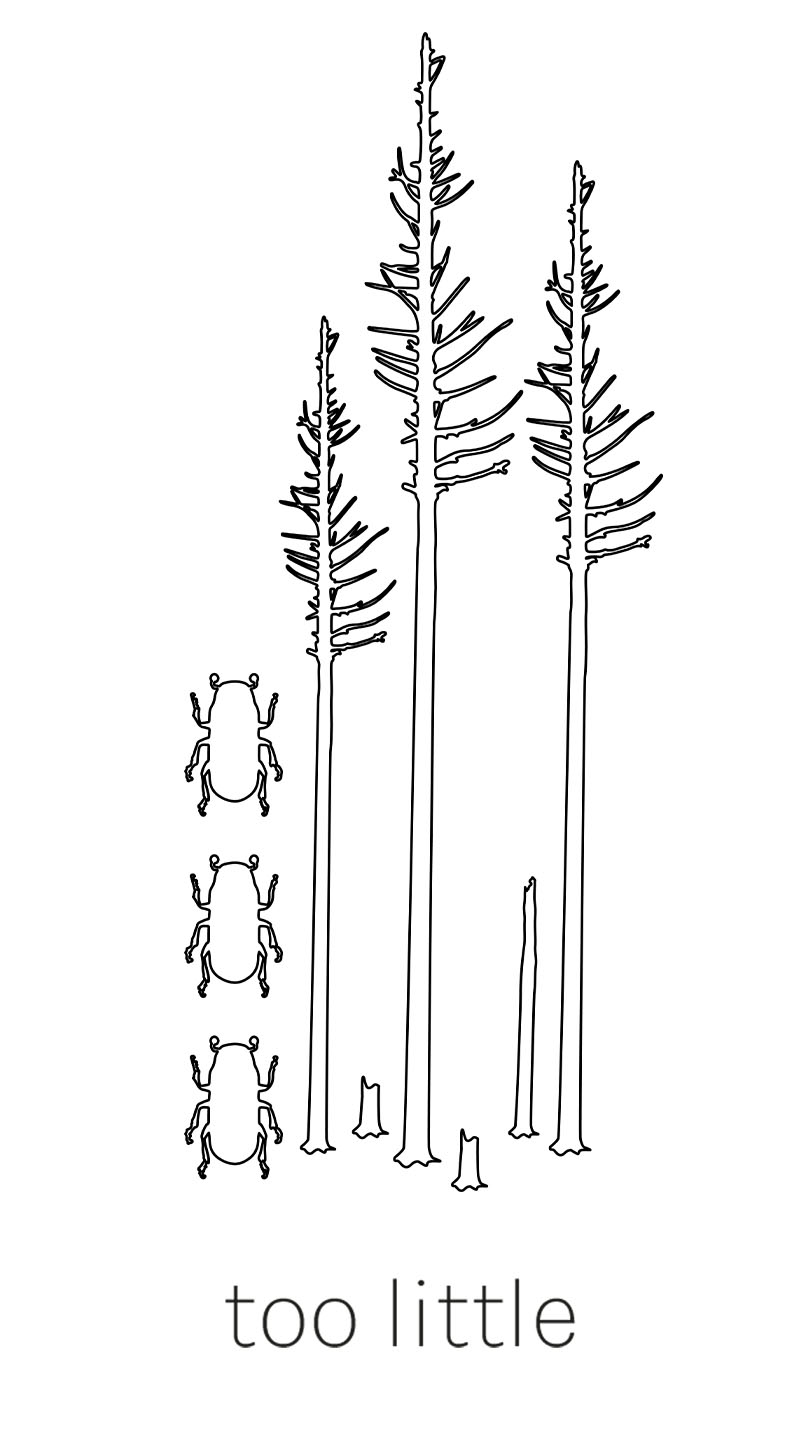
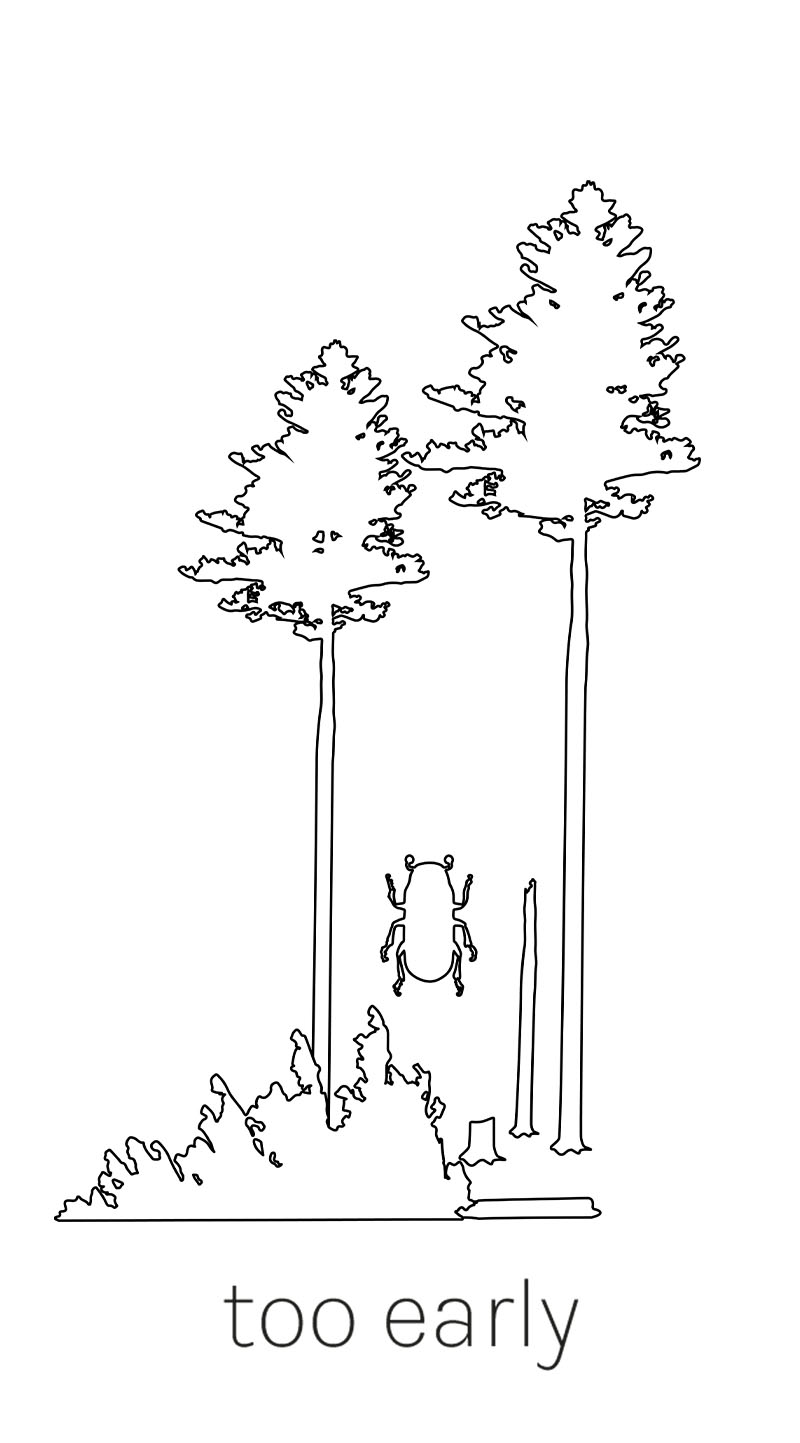
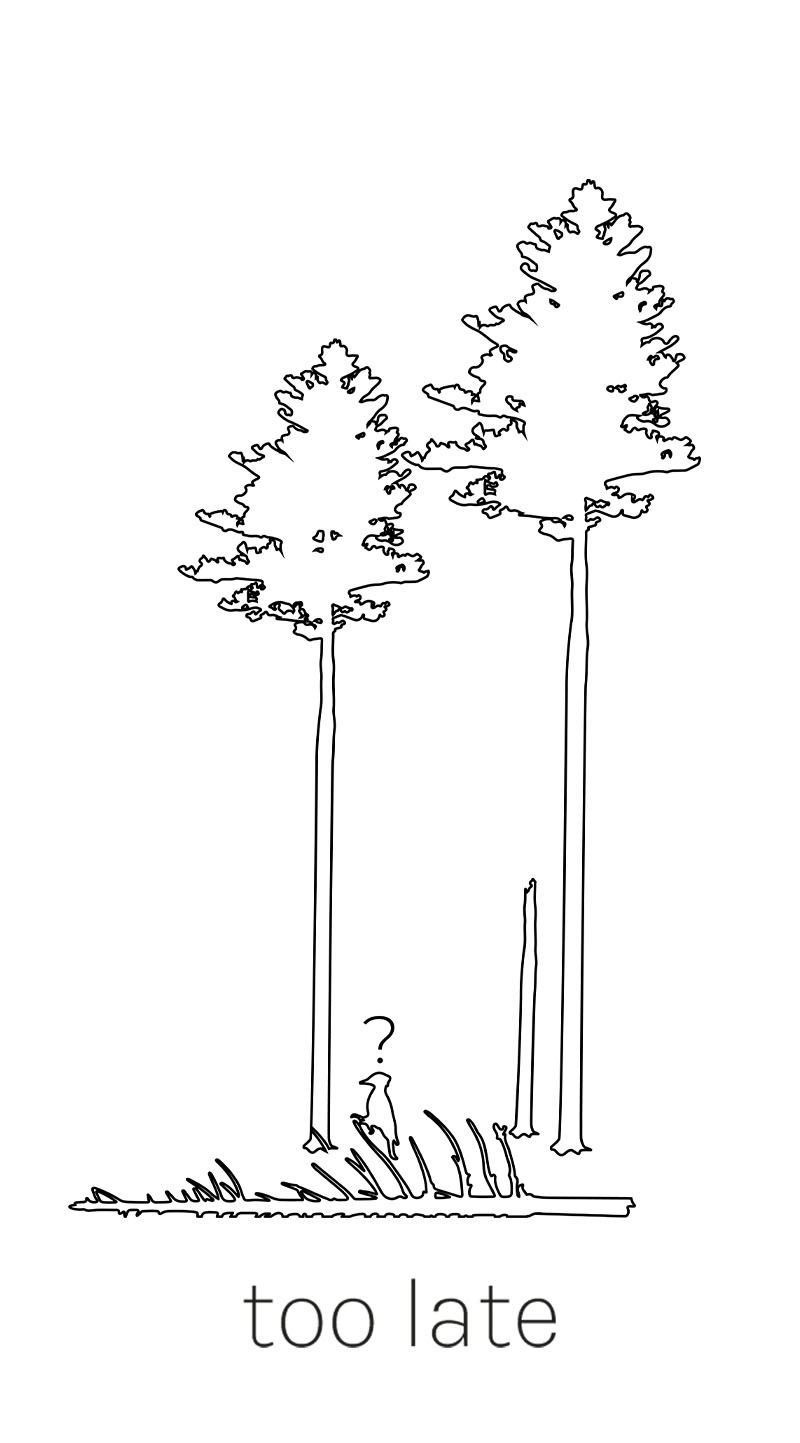
Key insights from field and desktop research:
Politics and the economy rely exclusively on the strategy of clean forest management. This method requires a radical removal of material suitable for breeding, which prevents the bark beetle from reproducing. Infested and potentially endangered trees must be felled, destroyed, or transported away. In practice, however, these methods are inefficient and harmful. The development status, flight behavior, and exact location of the bark beetle are not known or are too inaccurate, resulting in high collateral damage to nature.
For monitoring purposes, only lure traps are used in practice, which attracts flying beetles with pheromones. Because these traps are controlled by hand and can only provide a warning of potential infestation, their use for monitoring is very limited. An improvement of the system would be to use pheromones, not as attractants but to analyze them to study the reproduction of the beetle itself.
![]()
Politics and the economy rely exclusively on the strategy of clean forest management. This method requires a radical removal of material suitable for breeding, which prevents the bark beetle from reproducing. Infested and potentially endangered trees must be felled, destroyed, or transported away. In practice, however, these methods are inefficient and harmful. The development status, flight behavior, and exact location of the bark beetle are not known or are too inaccurate, resulting in high collateral damage to nature.
For monitoring purposes, only lure traps are used in practice, which attracts flying beetles with pheromones. Because these traps are controlled by hand and can only provide a warning of potential infestation, their use for monitoring is very limited. An improvement of the system would be to use pheromones, not as attractants but to analyze them to study the reproduction of the beetle itself.
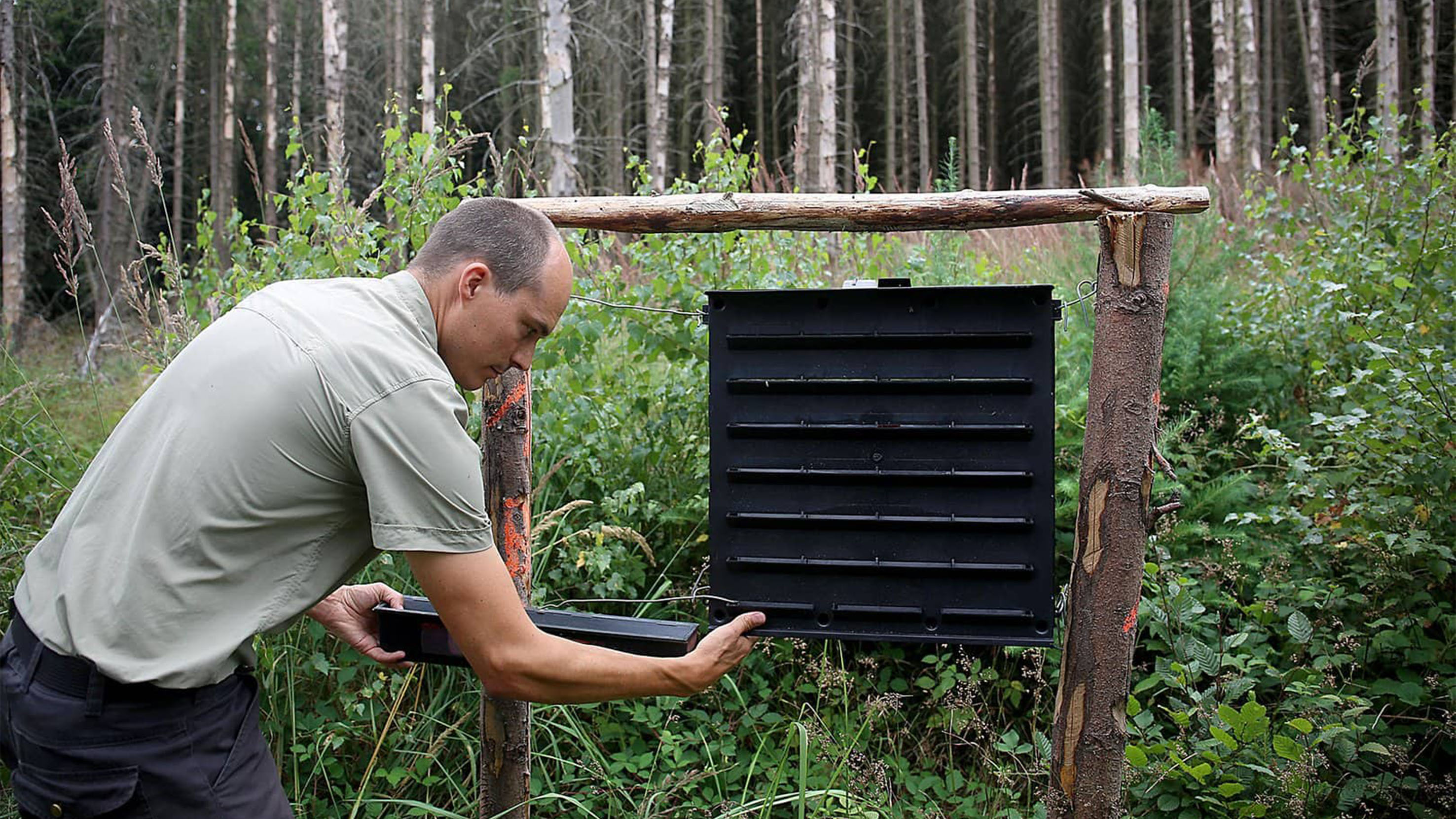
HOW ?
DEVELOPMENT PROCESS OF THE PROBE
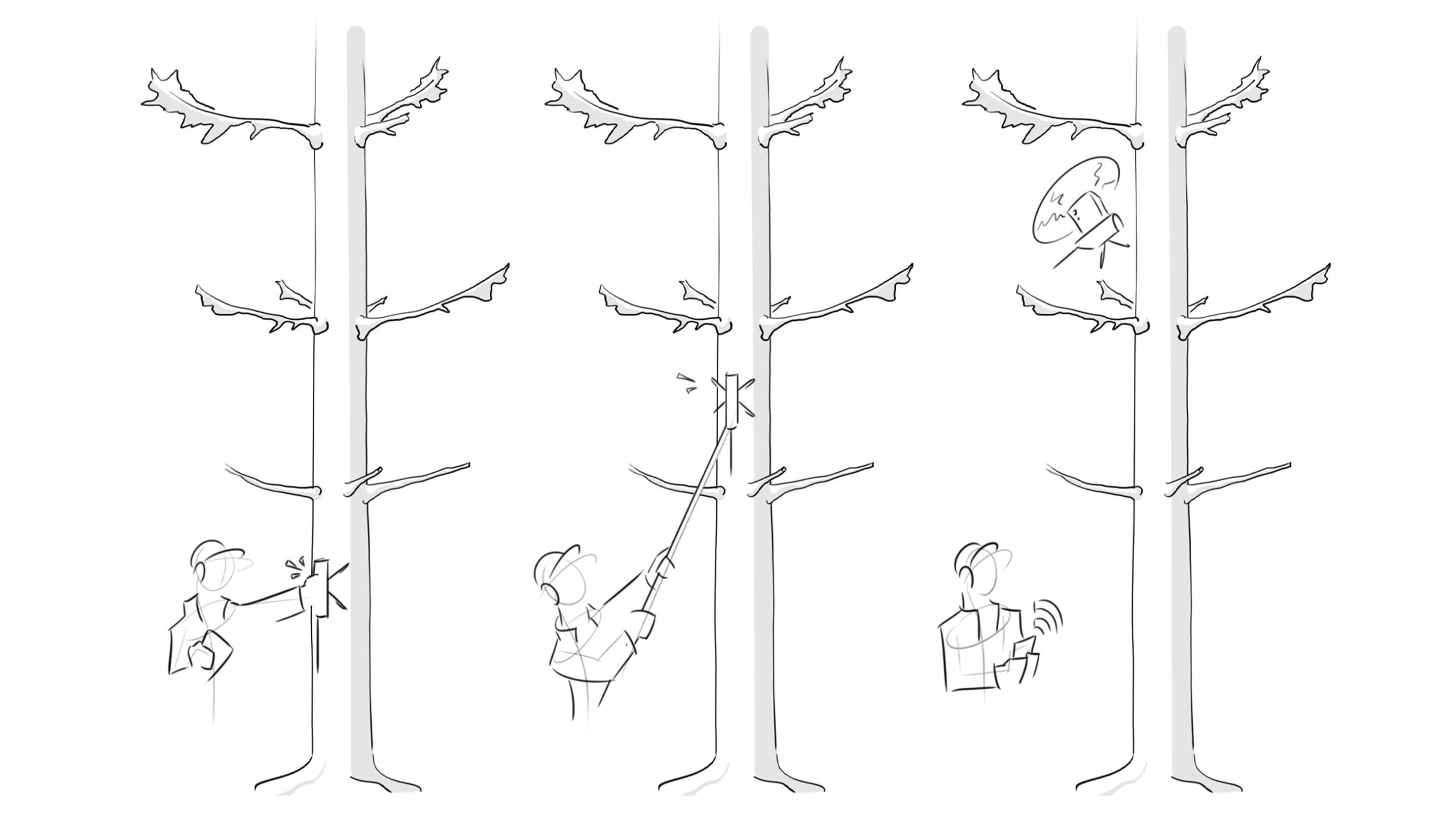
To prevent imprecise action in forestry, a new monitoring system must be developed. Probes need to be installed in vulnerable areas in spring to obtain precise data on the pest's activities throughout the year.
Several concepts were elaborated during the development phase. The first concepts included autonomous drones and probes that could be installed in different ways. The final concept was a combination of a rod and a probe, which is easy to install and maintain.
Several concepts were elaborated during the development phase. The first concepts included autonomous drones and probes that could be installed in different ways. The final concept was a combination of a rod and a probe, which is easy to install and maintain.
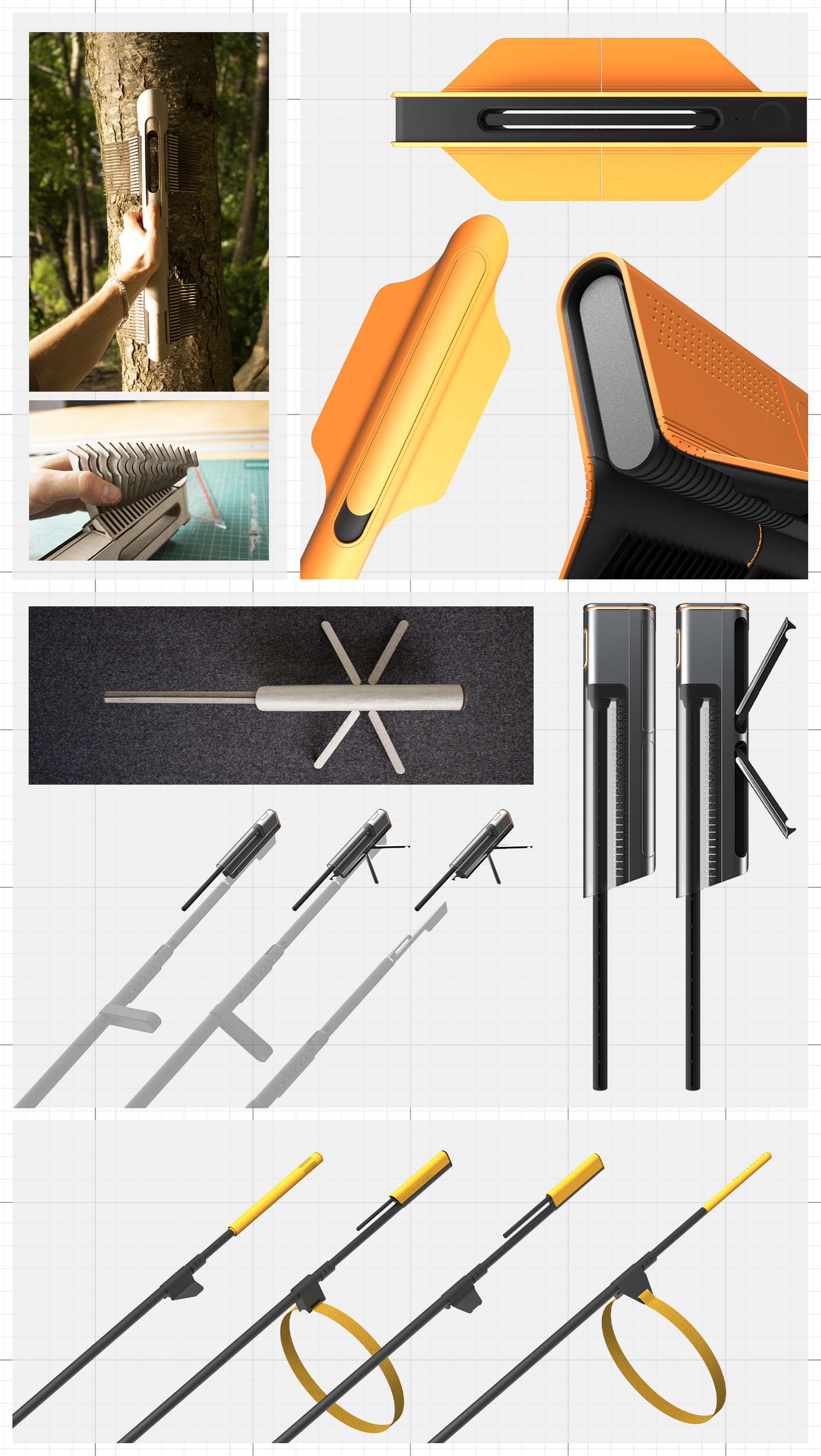




FINAL RESULT
APPLICATION AND FUNCTION
Final Concept PILUM:
For precise monitoring, internal sensors analyze pheromones and resin particles in the air that the bark beetle produces in its reproduction cycle. By detecting the wind direction, traces can be recorded from a greater distance in addition to monitoring a suspicious tree only.
For installation, the probes themselves only need to be activated, extended, and attached with a belt to the trees. A process that can be carried out by professionals as well as amateurs for citizen science purposes. The data collected can be viewed on a public application, thus enabling a more precise and informed treatment of the forest.

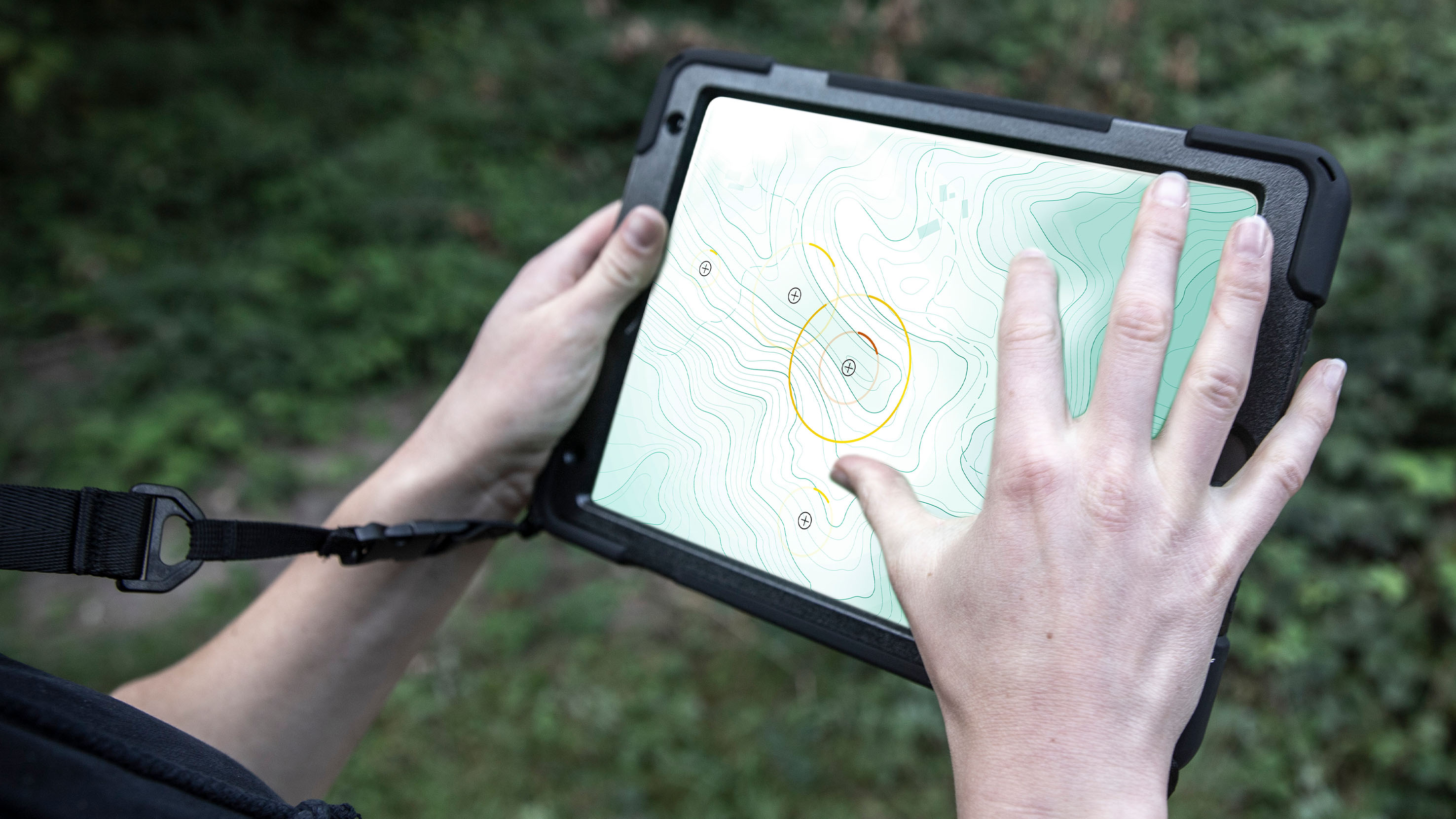

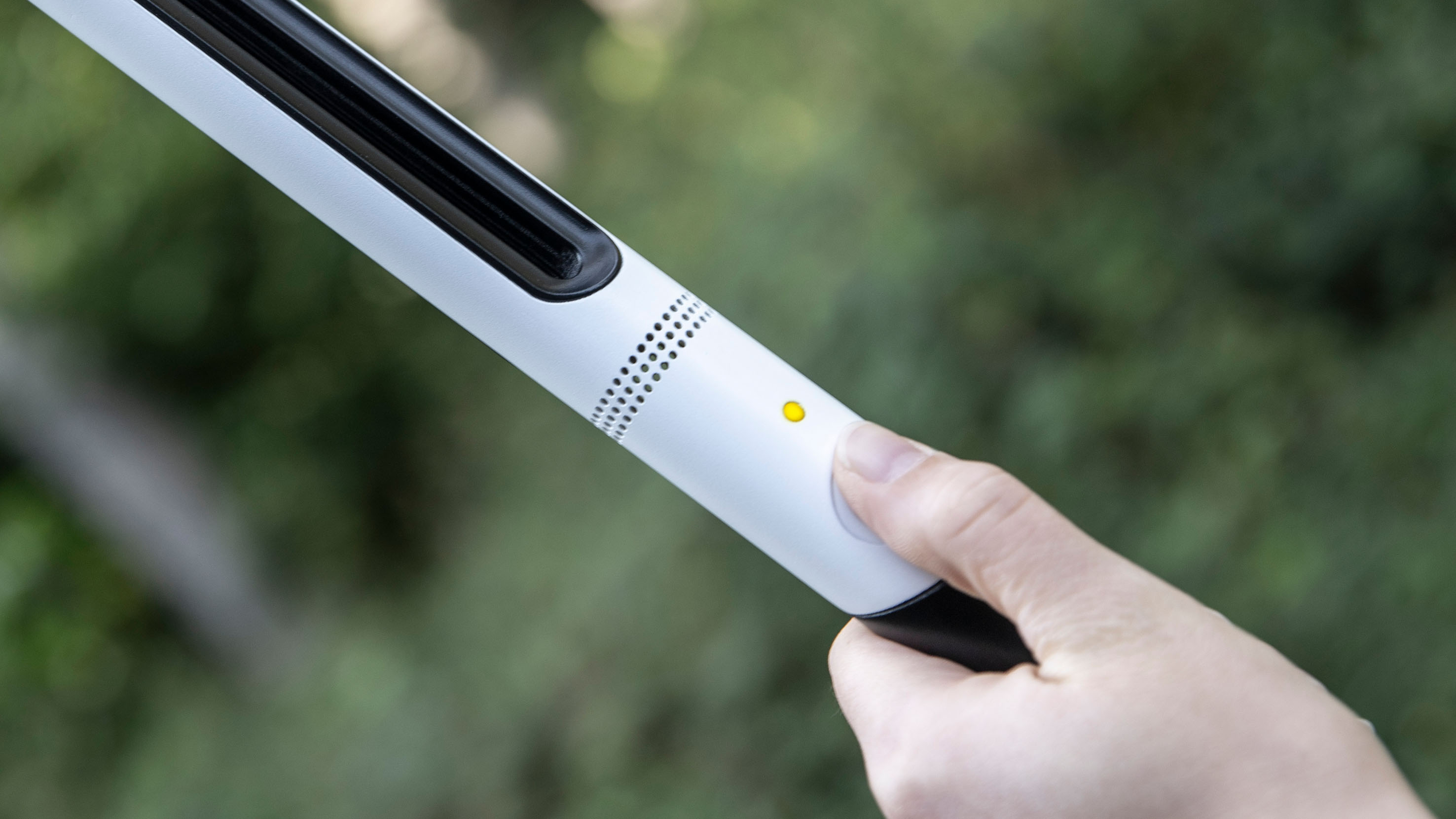
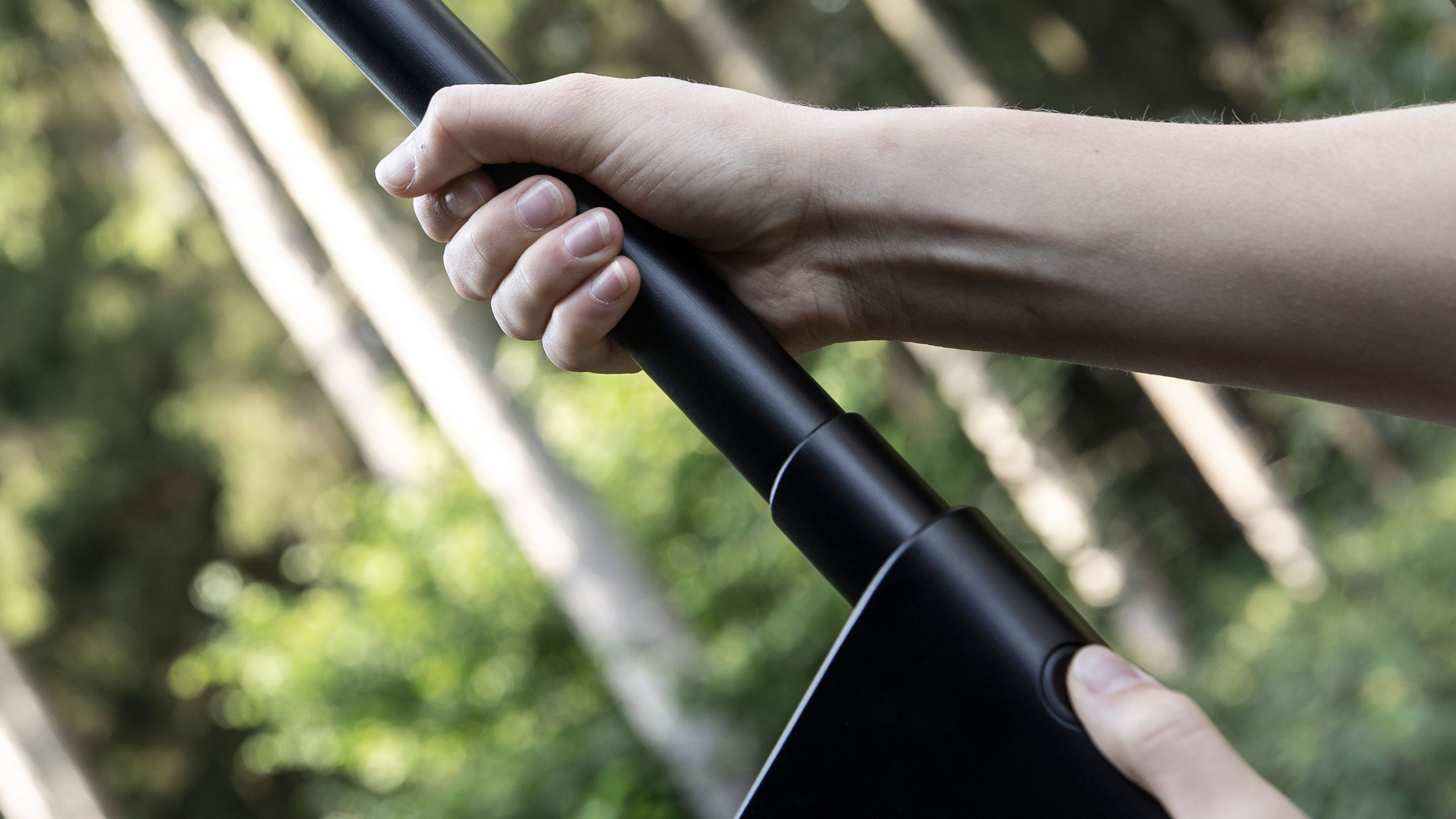



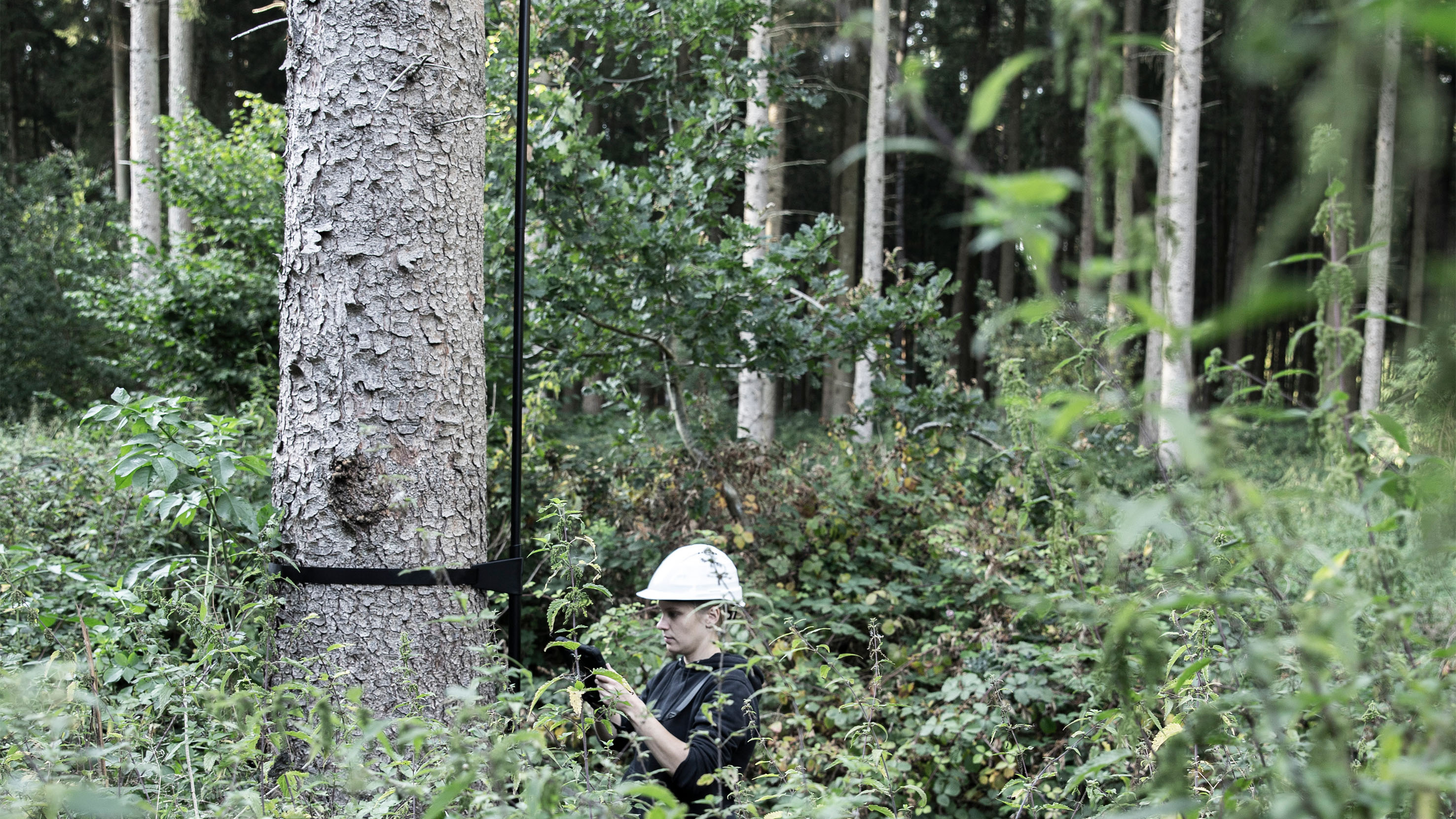
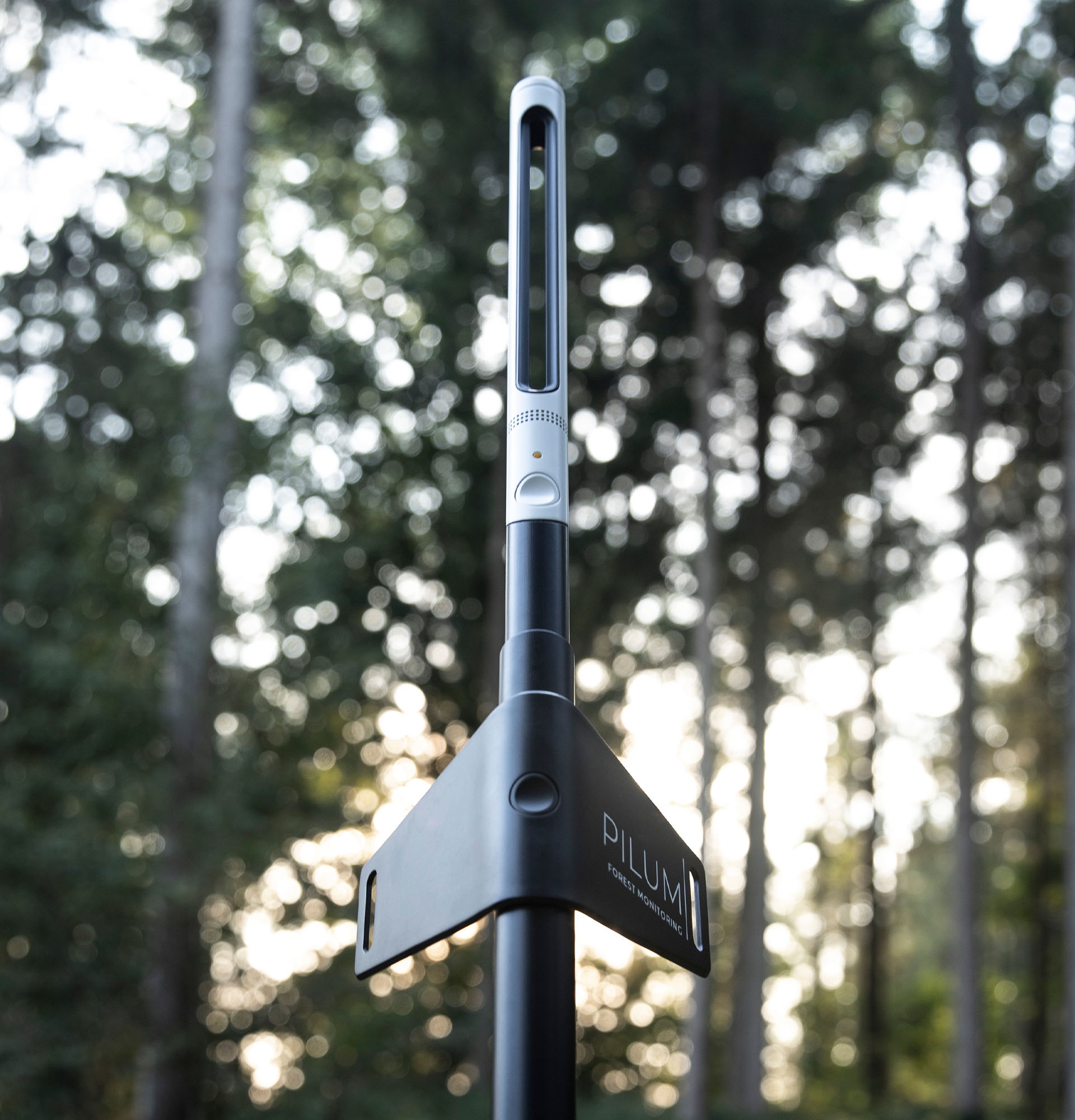
SHORT VIDEO PRESENTATION
TASK _ IMPROVE AND INTERLINK BARK BEETLE MONITORING
︎︎︎
WHY ?
UNDERSTANDING THE BLIND SPOTS
OF
GERMANY’S “CLEAN FOREST MANAGEMENT”

Around the world, forests are threatened by overforesting and the consequences of climate change, although they are indispensable for the health of nature and humans. Storms, pollutants, and pests are a burden on the tree population, with over 80% of all German forest damage being caused by the bark beetle alone. The bark beetle multiplies in the bark of conifer trees, which then die due to exhaustion.
To combat this pest in the long term, a transformation from forestry monocultures to more natural and thus more resistant forests must take place. On the other hand and in the short and medium term, the damage to the stock must be kept as low as possible.










Key insights from field and desktop research:
Politics and the economy rely exclusively on the strategy of clean forest management. This method requires a radical removal of material suitable for breeding, which prevents the bark beetle from reproducing. Infested and potentially endangered trees must be felled, destroyed, or transported away. In practice, however, these methods are inefficient and harmful. The development status, flight behavior, and exact location of the bark beetle are not known or are too inaccurate, resulting in high collateral damage to nature.
For monitoring purposes, only lure traps are used in practice, which attracts flying beetles with pheromones. Because these traps are controlled by hand and can only provide a warning of potential infestation, their use for monitoring is very limited. An improvement of the system would be to use pheromones, not as attractants but to analyze them to study the reproduction of the beetle itself.
![]()
Politics and the economy rely exclusively on the strategy of clean forest management. This method requires a radical removal of material suitable for breeding, which prevents the bark beetle from reproducing. Infested and potentially endangered trees must be felled, destroyed, or transported away. In practice, however, these methods are inefficient and harmful. The development status, flight behavior, and exact location of the bark beetle are not known or are too inaccurate, resulting in high collateral damage to nature.
For monitoring purposes, only lure traps are used in practice, which attracts flying beetles with pheromones. Because these traps are controlled by hand and can only provide a warning of potential infestation, their use for monitoring is very limited. An improvement of the system would be to use pheromones, not as attractants but to analyze them to study the reproduction of the beetle itself.

HOW ?
DEVELOPMENT PROCESS OF THE PROBE

To prevent imprecise action in forestry, a new monitoring system must be developed. Probes need to be installed in vulnerable areas in spring to obtain precise data on the pest's activities throughout the year.
Several concepts were elaborated during the development phase. The first concepts included autonomous drones and probes that could be installed in different ways. The final concept was a combination of a rod and a probe, which is easy to install and maintain.
Several concepts were elaborated during the development phase. The first concepts included autonomous drones and probes that could be installed in different ways. The final concept was a combination of a rod and a probe, which is easy to install and maintain.





FINAL RESULT
APPLICATION AND FUNCTION
Final Concept PILUM:
For precise monitoring, internal sensors analyze pheromones and resin particles in the air that the bark beetle produces in its reproduction cycle. By detecting the wind direction, traces can be recorded from a greater distance in addition to monitoring a suspicious tree only.
For installation, the probes themselves only need to be activated, extended, and attached with a belt to the trees. A process that can be carried out by professionals as well as amateurs for citizen science purposes. The data collected can be viewed on a public application, thus enabling a more precise and informed treatment of the forest.










Project Titel _ PILUM | Masterthesis | Individual
Supervised by Prof. Detlef Rhein and Annika Frye | University of Fine Arts and Design Kiel
Supervised by Prof. Detlef Rhein and Annika Frye | University of Fine Arts and Design Kiel
Project Titel _ PILUM | Masterthesis | Individual
Supervised by Prof. Detlef Rhein and Annika Frye | University of Fine Arts and Design Kiel
Supervised by Prof. Detlef Rhein and Annika Frye | University of Fine Arts and Design Kiel